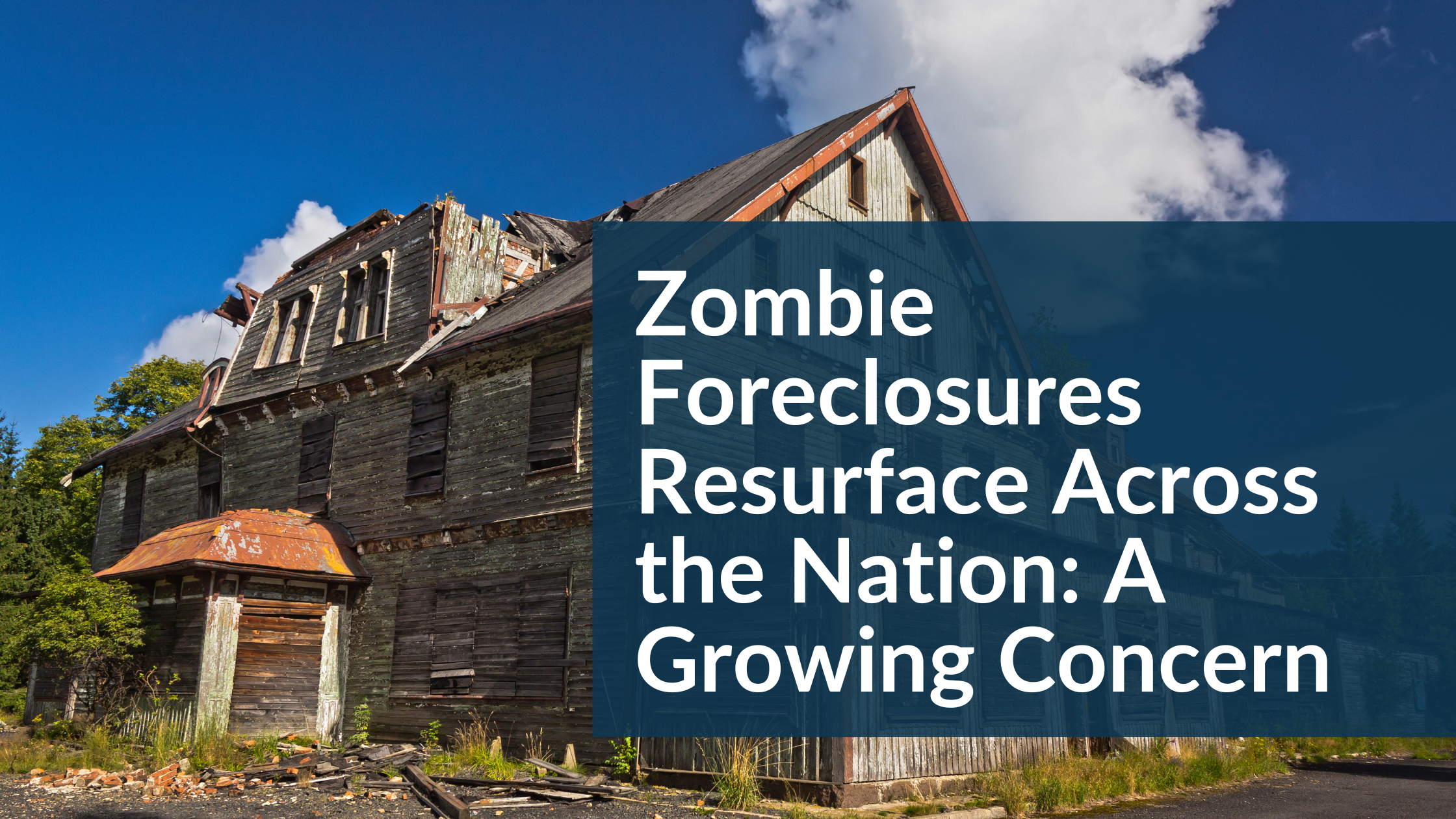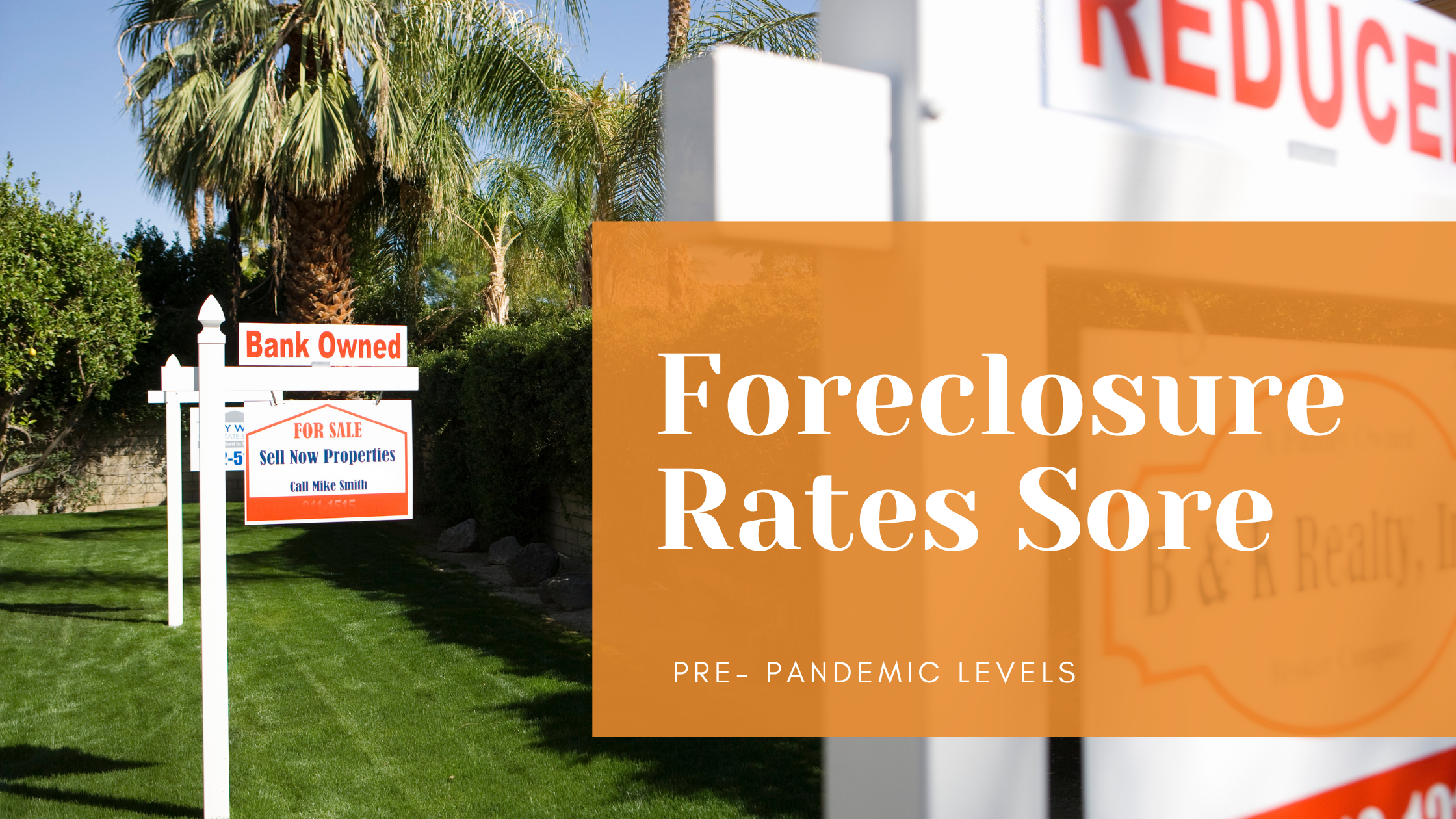Zombie Foreclosures Resurface Across the Nation: A Growing Concern

Recently ATTOM data conducted a report on foreclosure and vacant homes across the U.S. In this article, we will discuss their findings. The report examines publicly recorded real estate data collected by ATTOM, such as foreclosure status, equity, and owner-occupancy status, in conjunction with monthly updated vacancy data.
In addition, the report reveals that 298.533 residential properties in the United States were in the foreclosure process in the first quarter of this year, an increase of 5% from the fourth quarter of 2022 and an increase of 29.9% from the first quarter of 2022. Since the nationwide moratorium on lenders pursuing delinquent homeowners, imposed after the Coronavirus pandemic struck in early 2020, was lifted in the middle of 2021, an increasing number of homeowners have faced the possibility of foreclosure.
In the first quarter of 2023, there were 8,141 zombie foreclosures (pre-foreclosure properties abandoned by their owners), an increase of 5.4% from the previous quarter and 10.6% from a year ago. The number of zombie properties has increased in each of the previous four quarters.
Zombie foreclosures are on the rise, but they still only account for a small fraction of the nation's overall stock of 101.1 million homes. In the first three months of 2023, only one in every 12,415 dwellings will be unoccupied due to foreclosure. This is an increase from the previous quarter's ratio of 1 in 13,424 and the fourth quarter of 2022's ratio of 1 in 12,963.
For the most part of the country, "the potential damage from zombie foreclosures and the deterioration they might create stays well off the radar screen," said Rob Barber, CEO of ATTOM. But, since the numbers and the overall rate of foreclosures continue to rise, there are few reasons to believe this will change in the near future. It's something we'll keep an eye on, particularly in economically depressed areas.
One of the longest-lasting repercussions of the 11-year boom in the U.S. housing market, which more than doubled the national median house value, is the continued presence of zombie foreclosures, although these are still very uncommon across much of the country.
The median price of a single-family house dropped 8 percent nationally in the second half of last year, halting the upward trend. After the freeze was lifted, there has been a consistent increase in foreclosures.
Yet, thanks to the past decade's appreciation, the usual selling profit margin is now well over 50 percent, and the equity of over half of all mortgaged homes across the country is now at least twice what owners still owe on their mortgages. High levels of employment and other variables have put most homeowners in a position where they can either keep their homes and fight off foreclosure, or at least sell them before the lender takes them over.
The current environment contrasts sharply with the years after the Great Recession, when the housing market crashed and a large number of homeowners abandoned their homes to foreclosure.
Increases in Zombie Foreclosures are still quite small relative to the total market.
In the first quarter of 2023, a total of 8,141 residential properties facing possible foreclosure were vacated by their owners, up slightly from 7,722 in the fourth quarter of 2022 and from 7,363 in the first quarter of 2022.
While zombie foreclosures remain uncommon in most U.S. neighborhoods, the states with the largest increases from the fourth quarter of 2022 to the first quarter of 2023 are Iowa (zombie properties up 42%, from 160 to 227), Arizona (up 25%, from 40 to 50), Oklahoma (up 20%, from 118 to 142), Maryland (up 20%, from 150 to 180), and Massachusetts (up 20%, from 150 to 180). (up 17 percent, from 63 to 74).
Among states with at least 50 zombie foreclosures, the largest quarterly drops were seen in Maine (where the number of zombie properties fell from 67 to 60) and Nevada (where it fell from 101 to 91), as well as in Georgia (where it fell from 83 to 78), Connecticut (where it fell from 75 to 73), and Michigan (where it fell from 73 to 72). (down 3 percent, from 76 to 74).
There has been little change in the overall vacancy rate.
After declining for three consecutive quarters, the vacancy rate for all residential properties in the United States remained unchanged in the first quarter of 2023. Almost unchanged from the previous quarter at 1.27 percent (one in 79 properties), it is nonetheless down from the first quarter of last year's 1.37 percent (one in 73).
There have been significant annual decreases in the vacancy rate in the following states: Tennessee (from 1.94 percent of all homes in the first quarter of 2022 to 1.12 percent in the first quarter of this year), Georgia (from 1.74 percent to 1.44 percent), Minnesota (from 1.02 percent to 0.78 percent), New Mexico (from 2.07 percent to 1.86 percent), and Kansas (down from 2.35 percent to 2.15 percent).
Other key insights from Q1 of 2023
- There are more zombie foreclosures in Wichita, KS (10.5% of properties in the foreclosure process are vacant), Peoria, IL (9.9%), Cedar Rapids, IA (8%), Flint, MI (7.7%), and Palm Bay-Melbourne, FL (6%), among U.S. metro areas with at least 100,000 residential properties and at least 100 properties facing possible foreclosure in the first quarter of 2023. (7.4 percent).
- Cleveland, Ohio (6.1% of homes in the foreclosure process are vacant), Baltimore, Maryland (6%), Pittsburgh, Pennsylvania (5.9%), Indianapolis, Indiana (5.8%), and St. Louis, Missouri have the highest zombie-foreclosure rates in the first quarter of 2023 among major metro areas with at least 500,000 residential properties and at least 100 homes facing foreclosure (5.8 percent).
- About 846,000, or 3.6%, of the 23.7 million investor-owned properties in the United States during the first quarter of 2023 are unoccupied. The states with the largest proportions of empty investor-owned homes include Indiana (6.8 percent), Oklahoma (6%), Alabama (6%), Kansas (5.8 percent), and Ohio (6.8 percent) (5.8 percent).
- Thirteen percent of the approximately 13,700 bank-owned foreclosed properties in the United States during the first quarter of 2023 will be vacant. Among states with at least 50 bank-owned properties, the states with the highest vacancy rates are Kansas (26% unoccupied), Ohio (23.3%), Iowa (22.9%), Oregon (20.7%), and Illinois (20.7%). (20.1 percent).
- Broome County (Binghamton), New York has the highest rate of zombie foreclosures among U.S. counties with at least 500 properties in the foreclosure process during the first quarter of 2023 (12.1%), followed by Baltimore County, Maryland (11.2%), Peoria County, Illinois (11.2%), Pinellas County (Clearwater), Florida (8.9%), and Lake County, Indiana (outside Chicago) (8.5 percent).
- 44 of the top 50 zip codes with the highest proportion of zombie-infested dwellings are located in New York, Ohio, and Illinois, including five in Cleveland, Ohio. The highest rates are in zip codes 13754 in Broome County (Deposit), New York (one in every 240 homes), 44112 in Cleveland, Ohio (one in every 252), 12090 in Rensselaer County (Hoosick Falls), New York (one in every 255), 44103 in Cleveland, Ohio (one in every 284), and 10993 in Rockland County (West Haverstraw), New York (one in every 284). (one in 286).
ATTOM studied county tax assessor data for about 100 million residential properties, split down by foreclosure status and owner occupation status, to determine vacancy. The investigation was limited to metropolitan statistical regions with at least 100,000 residential properties and counties having at least 50,000 residential properties. Vacancy data is available at https://www.attomdata.com/solutions/marketing-lists/.
What are your thoughts on this? Let us know in the comments below.

.png)
